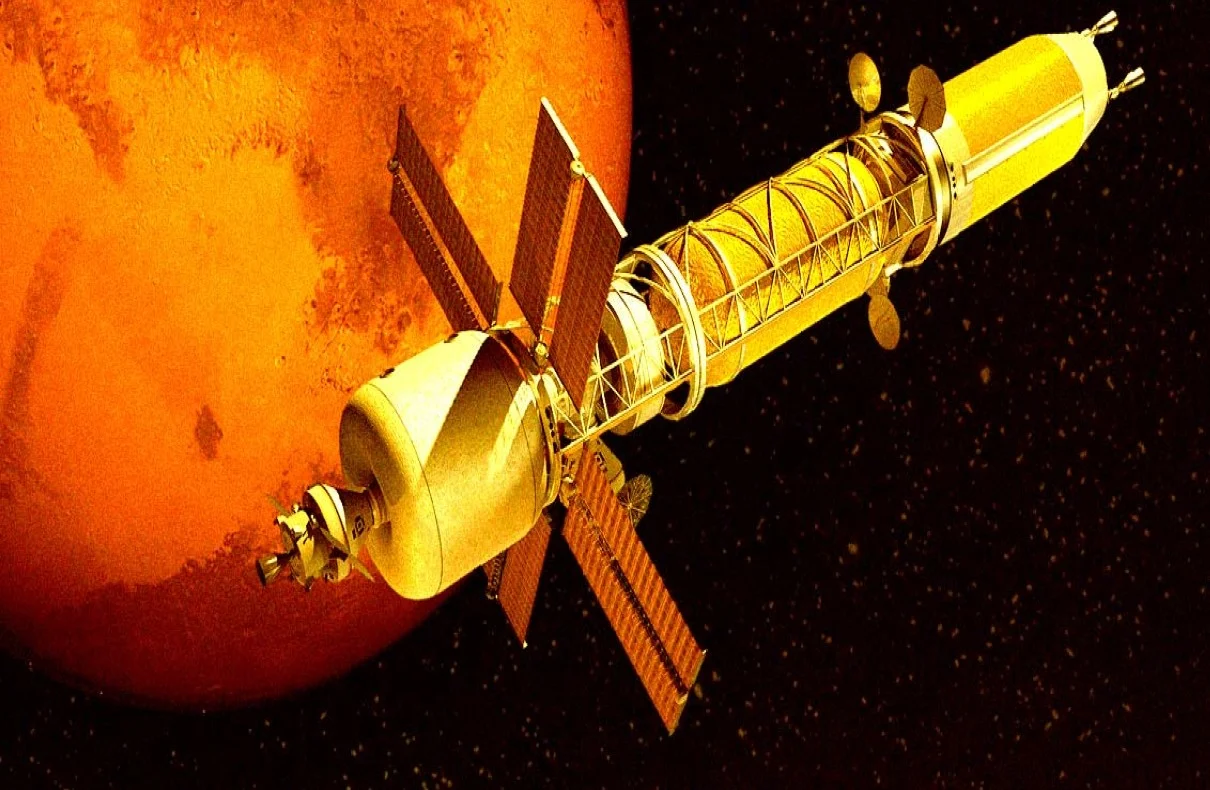NASA, Space X , China, the European Space Agency … all have plans to send manned missions to Mars over the next decade, but the 225 million kilometer journey to the red planet could take several months, even years if traditional chemical fuel is used . The second option is to use nuclear energy.
This alternative technology to chemically propelled rockets that NASA is now developing is called nuclear thermal propulsion and uses nuclear fission , something that could one day power a rocket that makes the trip in only half the time.
Nuclear fission involves using the large amount of energy released when an atom is split by a neutron. This reaction is known as a fission reaction. “Fission technology is well established in power generation and nuclear-powered submarines, and its application to power a rocket could one day give NASA a faster, more powerful alternative to chemically propelled rockets , ” explains Dan Kotlyar of the Georgia Institute of Technology.
NASA and the Defense Advanced Research Projects Agency (DARPA) are jointly developing this technology and aim to deploy and demonstrate the capabilities of a prototype system in space by 2027 , potentially making it one of the first of its kind to be built and operated by the U.S.
Nuclear thermal propulsion could also one day power maneuverable space platforms that would protect U.S. satellites in and out of Earth orbit.
Kotlyar’s team builds models and simulations to improve and optimize nuclear thermal propulsion system designs . Their goal is to design the nuclear thermal propulsion engine that will carry a manned mission to Mars.
Currently, more than 400 operating nuclear reactors around the world use nuclear fission technology. Most of these operating nuclear reactors are light water reactors. These fission reactors use water to slow down neutrons and absorb and transfer heat. The water can create steam directly in the core or in a steam generator, which drives a turbine to produce electricity.
Nuclear thermal propulsion systems work in a similar way, but use a different nuclear fuel that has more uranium-235 in it. They also operate at a much higher temperature, making them extremely powerful and compact . Nuclear thermal propulsion systems have a power density about ten times greater than a traditional light water reactor.
Nuclear propulsion could have an advantage over chemical propulsion for several reasons: they are lighter and their thrust makes the rocket accelerate faster. The nuclear thermal propulsion engine will be different from all existing fission power systems , so engineers will need to create software tools that work with this new engine.
“My group designs and analyzes nuclear thermal propulsion reactors using models,” Kotlyar concludes. “We model these complex reactor systems to see how things like temperature changes can affect the reactor and rocket safety . But simulating these effects can require a lot of computing power.”
